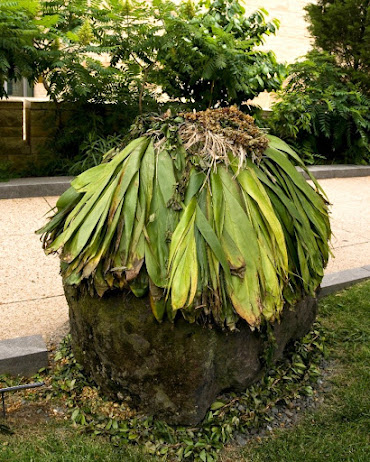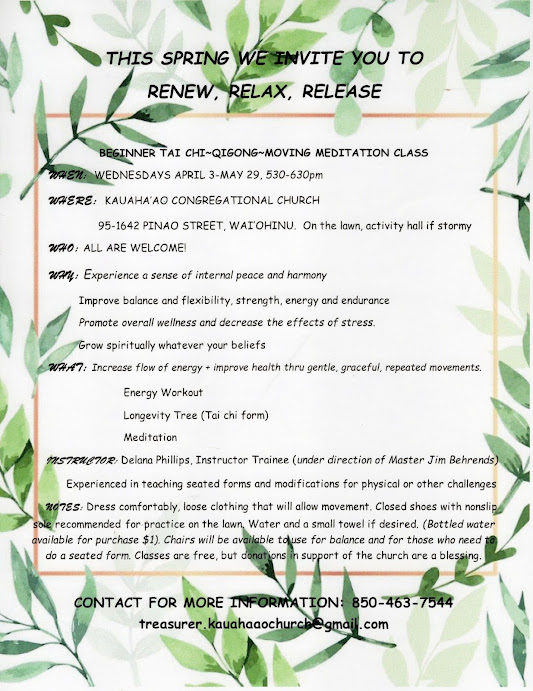HVO SCIENTISTS TRAVELED TO THE CITIES ON VOLCANOES CONFERENCE in February. The latest Volcano Watch, written by USGS Hawaiian Volcanoes Observatory scientist Naalia Deigne, explains: In February, the volcanological community gathered for the 12th edition of Cities on Volcanoes (COV12), a conference of the International Association of Volcanology and Chemistry of the Earth's Interior.
This conference series started in 1998, with the third conference held in Hilo in 2003; Cities on Volcanoes conferences are held every two to three years in a city that co-exists with and is influenced by volcanism.
This year COV12 was in Antigua, Guatemala, the colonial capital of Guatemala from 1543-1773, and a UNESCO World Heritage Site since 1979. Three volcanoes, Fuego, Agua, and Acatenango, are located near Antigua. Fuego is quite active: minor explosions happen multiple times a day, with the resulting ash plumes visible from Antigua (quite a sight over breakfast!). Tragically, on June 3, 2018, Fuego had its largest eruption in more than 40 years, with pyroclastic flows (fast moving flows of hot gas, volcanic ash, and rocks) killing hundreds of people, mostly within a single rural community on the southeast flank of the volcano.
About 650 people from around the world attended COV12, including volcano observatory staff, academics from a variety of disciplines, students, emergency managers and government officials, indigenous cultural practitioners, artists, and local residents. Seven State of Hawaii residents attended,
hailing from the USGS Hawaiian Volcano Observatory, Hawaiʻi County Civil Defense Agency, and the University of Hawaiʻi (Hilo and Mānoa).
Conferences such as COV12 allow participants to share experiences, ideas, observations, and research findings. Four of the five conference days either started or ended with three or four general talks followed by a panel discussion open to the public. Together, these sessions explored volcanology and risk reduction in Latin America and beyond, with special attention paid to the role and contributions of local and indigenous communities, and emerging, more inclusive and holistic research approaches. These were conducted in both English and Spanish, with simultaneous translation provided.
Most of the rest of the conference consisted of concurrent sessions, each grouped around a topic. Participants faced a tough choice for which of the many fascinating sessions to attend. Sessions at COV12
 |
| The late Dr. Jim Kauahikaua, of HVO. Photo from Hawaiian Volcano Observatory |
The Hawai‘i contingent played an active role in the conference, including running and presenting in sessions such as Lessons from recent eruptions and other crises, Long-term engagement and interaction between civil authorities and volcano observatories, The Indigenous voice in volcanology, Multidisciplinary investigations to unravel the structure and dynamics of active volcanic systems, and Creating “volcano-ready” communities.
During the third day of the conference, participants could attend one of two field trips: visiting either Pacaya or Fuego volcano. Pacaya volcano is near the capital Guatemala City, and its eruption in 2010 resulted in volcanic ash covering the city and causing significant disruption (for example, the airport was closed for nearly five days). Those who chose the Pacaya field trip were treated to a long hike and beautiful vistas.
Reunión Golf Resort that was evacuated prior to pyroclastic density currents sweeping through, destroying and inundating much of the resort. This was followed by a visit to San Miguel Los Lotes, the village where hundreds of fatalities were caused by these pyroclastic density currents. Most buildings in this village are still buried under many feet and tons of deposits, with no night-time occupancy permitted. It was sobering and sad to walk down a cleared street near where so many had perished in and near their homes.
At the end of the conference, the late Dr. Jim Kauahikaua of HVO was awarded the first IAVCEI Honorary Award, along with the late Dr. Peter Hall from the Instituto Geofísico de la Escuela Politécnica Nacional (Ecuador’s volcano monitoring entity). This award was given in recognition of Jim’s contribution and services to volcano monitoring and risk reduction, which continues to serve as an example for the entire volcanology community. HVO Scientist-in-Charge Ken Hon gave a moving tribute in Jim’s honor.
Cities on Volcanoes will soon return to the USA for the first time since 2003. The next edition will be held in Bend, Oregon, in 2026.
 |
| A bright red adult ʻiʻiwi. Photo by Janice Wei |
PARADISE UNDER PRESSURE: TRACKING THE RARE FOREST BIRDS OF HAWAI‘I is the topic at
After Dark in the Park this Tuesday, March 12 at 7 p.m. at Kīlauea Visitor Center auditorium in Hawai‘i Volcanoes National Park.
 |
| Avian ecologist Seth Judge. NPS photo |
National Park Service Avian Ecologist Seth Judge describes the trends of native forest birds and how a warming climate has contributed to their decline. Part of Hawai‘i Volcanoes’ ongoing After Dark in the Park programs and co-sponsored by the Friends of Hawaiʻi Volcanoes National Park. Free, but park entrance fees apply.
To read comments, add your own, and like this story, see facebook.com/kaucalendar. See latest events, print edition and archive at kaunews.com. See 7,500 copies the mail and on stands.
A HUGE ROCK TAKEN FROM KAʻŪ TO WASHINGTON, D.C. will be returned by the National Museum of the American Indian this summer. Named Kānepō, the boulder was leant to the museum through the Kūpuna Advisory Council of Hawai‘i Volcanoes National Park 20 years ago. Halena Kapuni-Reynolds, curator of the museum, released the following statement in Hawaiian and English:
Aloha mai kākou! ʻO Halena kēia, ke kahu o ka moʻaukala a me ka moʻomeheu Hawaiʻi ma ka hale hōʻikeʻike aupuni o ka poʻe ʻŌiwi o ʻAmelika. Ma ka ʻaoʻao komohana o kā mākou hale hōʻikeʻike ma Wakinekona D.C., ua hoʻonohonoho ʻia he pōhaku nui mai Hawaiʻi mai no ka hōʻike ʻana aku i kā mākou
 |
| Kānepō, a huge boulder from Kaʻū, will be returned this summer from National Museum of the Native American Indian in Washington, D.C. Photo from The Smithsonian Museum |
Greetings everyone! This is Halena, the curator of Native Hawaiian history and culture at the National Museum of the American Indian. On the western side of our museum in Washington D.C., a boulder from Hawaiʻi was placed in order to demonstrate our responsibility to represent Native Hawaiians. Kānepō is the name of this rock, and they are from the Kaʻū District on Hawaiʻi Island. In 2004, Kānepō was given by the Kūpuna (Elders) Advisory Council of Hawaiʻi Volcanoes National Park for 20 years. In that time, they have been greeted by many people, and numerous offerings were left for them. This summer, this celebrated rock will be honored at the Folklife Festival and then sent home to its wonderful land. When you see Kānepō, greet him like you would an esteemed elder.
ʻŌlelo Pākuʻi: Mahalo a nui loa iā ʻoukou pākahi a pau no kou mau manaʻo e pili ana iā Kānepō. ʻO ka manaʻo nui o nā ʻōlelo kākoʻo a me nā ʻōlelo hoʻohalahala, ʻo ia hoʻi ke aloha o ka poʻe Hawaiʻi no kā lākou ʻāina a me nā pōhaku. ʻO kēia aloha ke kumu i hāʻawi ʻia ʻo Kānepō no ka manawa i hiki iā ia ke
 |
| Kānepō from Kaʻū, outside Museum of the Native American Indian, in Washington, D.C. Photo by Julia Neal |
hoʻi i Kaʻū. E like me ʻoukou, ua kūkākūkā nui ka ʻAha Kūpuna no ka hoʻouna ʻana i kekahi pōhaku i Wakinekona D.C. i ia mau makahiki 20 aku nei. Ua hōʻike ʻia nā mānaʻo kākoʻo a me nā mānaʻo kānalua no kēia hana, a no laila, ua hoʻoholo ka ʻAha Kūpuna e hoʻouna iā Kānepō me ka manaʻo e hoʻihoʻi mai ʻo ia i Hawaiʻi i ka manawa kūpono. I loko o nā makahiki 20, ua kipa pinepine ʻia ʻo Kānepō e ko Hawaiʻi poʻe iā lākou e huakaʻi ana ma Wakinekona D.C. Ua waiho nui ʻia nā hoʻokupu nona, a he hōʻike hou kēia o ke aloha o ka poʻe Hawaiʻiiā ia. Mahalo aku kākou i ka ʻaha kūpuna a me ka poʻe o Hawaiʻi no ka ʻae ʻana iā mākou e hōʻike aku iā Kānepō i kēia mau makahiki he nui. Na mākou ke kuleana e hoʻihoʻi iā ia i kona onehānau i kēia kauwela.
Kapuni-Reynolds said, "Thanks to each of you for voicing your perspectives on Kānepō. Overall, your support and criticism illustrate how much aloha Native Hawaiians have for their lands and stones. This aloha is the reason that Kānepō was loaned so that they could be returned to Kaʻū. Just as you have done, the Kūpuna Advisory Council spent much time deliberating whether or not they should send a stone to Washington D.C. 20 years ago."










.heic)









.jpg)
